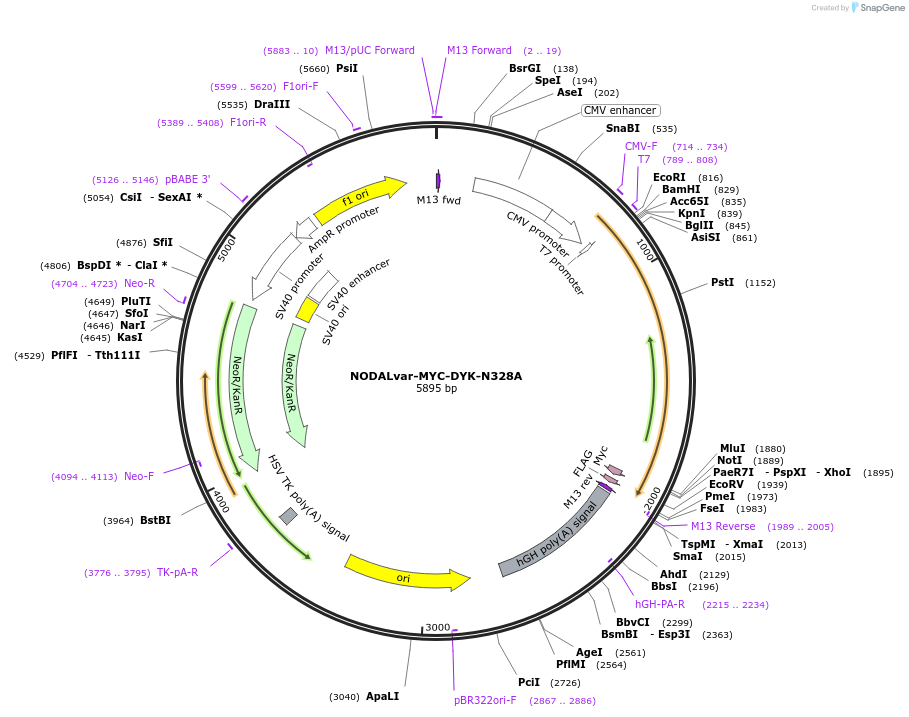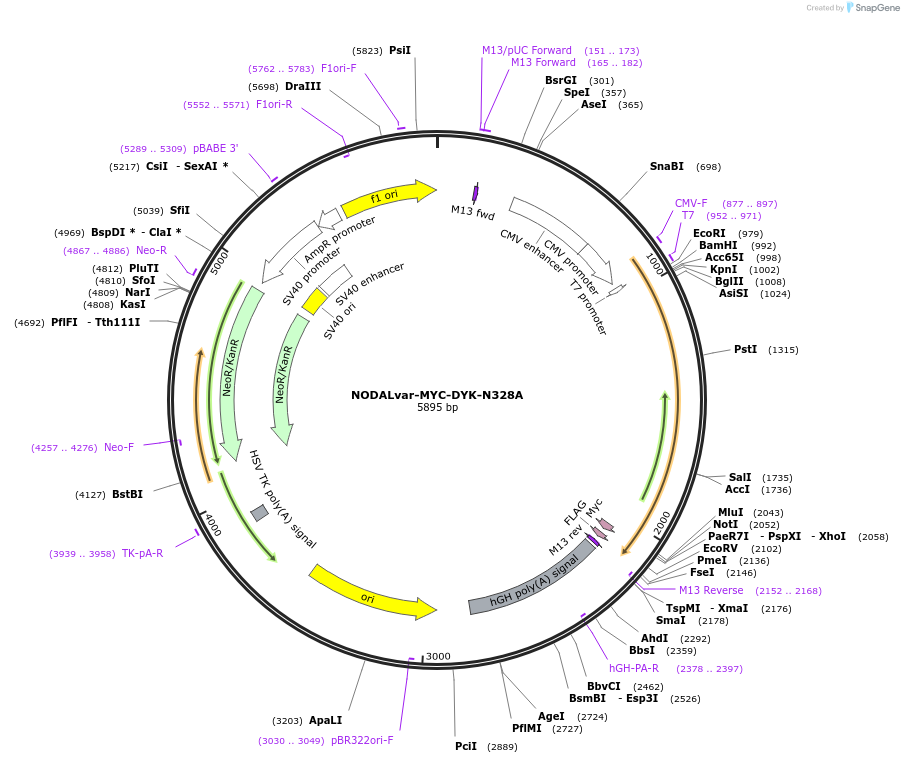NODALvar-MYC-DYK-N328A
(Plasmid
#115246)
-
PurposeFor mammalian expression of a human NODAL splice variant open reading frame (with a mutated N-glycosylation site) with a C-terminal MYC-DYK tag
-
Depositing Lab
-
Publication
-
Sequence Information
Ordering
| Item | Catalog # | Description | Quantity | Price (USD) | |
|---|---|---|---|---|---|
| Plasmid | 115246 | Standard format: Plasmid sent in bacteria as agar stab | 1 | $89 | |
Backbone
-
Vector backbonepCMV6
-
Backbone manufacturerOrigene
-
Vector typeMammalian Expression
-
Selectable markersNeomycin (select with G418)
Growth in Bacteria
-
Bacterial Resistance(s)Kanamycin, 50 μg/mL
-
Growth Temperature37°C
-
Growth Strain(s)DH5alpha
-
Copy numberUnknown
Gene/Insert
-
Gene/Insert nameNODAL splice variant
-
SpeciesH. sapiens (human)
-
MutationN328A
-
Entrez GeneNODAL (a.k.a. HTX5)
- Promoter CMV
-
Tag
/ Fusion Protein
- MYC-DYK (C terminal on insert)
Cloning Information
- Cloning method Restriction Enzyme
- 5′ cloning site unknown (unknown if destroyed)
- 5′ sequencing primer T7
- 3′ sequencing primer hGH-PA-R
- (Common Sequencing Primers)
Terms and Licenses
-
Academic/Nonprofit Terms
-
Industry Terms
- Not Available to Industry
Trademarks:
- Zeocin® is an InvivoGen trademark.
Depositor Comments
The N-glycosylation site unique to the NODAL variant mature peptide is mutated . Please visit https://www.biorxiv.org/content/early/2018/03/04/276170 for bioRxiv preprint.
These plasmids were created by your colleagues. Please acknowledge the Principal Investigator, cite the article in which the plasmids were described, and include Addgene in the Materials and Methods of your future publications.
-
For your Materials & Methods section:
NODALvar-MYC-DYK-N328A was a gift from Lynne Postovit (Addgene plasmid # 115246 ; http://n2t.net/addgene:115246 ; RRID:Addgene_115246) -
For your References section:
Genetically regulated human NODAL splice variants are differentially post-transcriptionally processed and functionally distinct. Findlay SD, Bilyk O, Lypka K, Waskiewicz AJ, Postovit L. (2018) bioRxiv 276170 10.1101/276170




